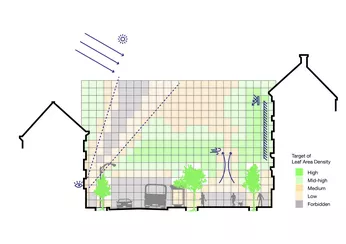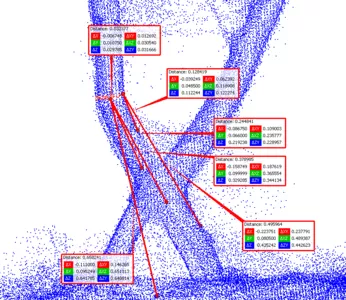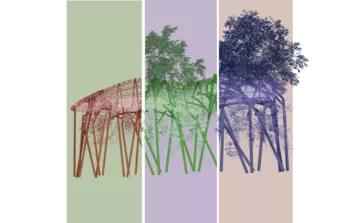SP5: Designing UGI




Head: Prof. Dr. Ferdinand Ludwig
Affiliated PhD Student: Xiaohan Chang
Background
The capacity of UGI to support human health and well-being by providing ESS relies on the long-term development of plants and corresponding design and management methods. However, UGI is usually designed with the focus on an aspired final state and the development process up to the achievement of this goal is not adequately considered. Neglecting the processual aspects of UGI can lead to failures concerning the provision of ESS and to overlooking potential synergies between UGI development and urban transformations (SP3). So far only few projects feature, e.g., tree growth as a key aspect of the design concept and relate it to urban transformation. In contrast, in this project design is understood as open systems design, focusing as much on the management of growth processes as on the initial planting design. By adding the aspect of time to the evaluation of key performance indicators the project will contribute to the indicator framework and willprovide all projects with a methodological basis for transferring the scientific findings into design practice (operationalization). The specific focus of the project will be on urban trees and their integration in the built environment as hybrid systems.
Objectives
The overall objective is to develop a workflow to design UGI as open dynamic systems with only partly predictable developmental pathways.
The main objectives are:
(O1) Development of an iterative design process that integrates the established methods of tree growth modeling (SP8) and microclimate modeling (SP7);
(O2) A Voxel model to describe target parameters in space and time within this design process;
(O3) Visualization methods that adequately represent and communicate the results of this design process, with particular attention to aspects of uncertainty.
The research questions are:
(Q1) How can the dependency between partially unpredictable growth processes and intended effects of UGI be taken into account in design?
(Q2) How can the intended effects of UGI be described as spatial and time-dependent parameters?
(Q3) How can the iterative design process (O1) and the voxel model (O2) be used to design UGI as dynamic, open systems and how can such designs be represented?
Execution: Hadi Yazdi
Dissertation: A workflow to design UGI as dynamic open systems, demonstrated by the integration of tree growth in architectural development and urban transformation.
Methods:
To capture the necessary plant structure for growth and microclimatic modeling we will build on the findings of urban trees characterization (SP8) and complement these with novel approaches to data acquisition and extraction, i.e., unmanned aerial vehicles (UAV) survey according to and LiDAR-with-SLAM process according to in stage 1 of the project. For decision support in the iterative design process we will adapt Markov decision processes (MDPs) from forestry science. In stage 2 we will build on methods under development that translate the established representation of data in voxel models into a design approach. The voxel space covers the above as well as the below-ground growth space of trees, thereby connecting to the findings of the research on soil carbon sequestration (SP11). Finally, in stage 3 a research-by-design approach following the work flow established by is employed for visualization. The case studies for this design research will be the breathable corridors from SP2, and the building typologies of SP6 (thereby contributing to the aspect of substitution). Building on the methods established in SP1 and SP6 the results of this test design will be evaluated in regard to urban microclimate, human well-being and biodiversity.
Outlook
For Period II it is planned to up-scale the voxel approach from the building or street level to a neighborhood or city quarter level, and to explore synergies between urban transformation and plant growth concerning social-technological development.
Execution: Sissy Xi Chen
This project emphasizes the importance of considering trees in urban green infrastructure (UGI) through a comprehensive examination of both their design and management. While tree design traditionally focuses on the final, mature state, it often neglects the developmental process (the temporal dimension) leading to that outcome. Few projects have incorporated tree growth as a central aspect of their design concepts. This project takes a different approach by adopting a spatio-temporal system design, where the focus is equally on managing growth processes as it is on the initial planting design.
Building on a machine learning-based tree planting model from a previous project, this PhD project addresses the underground environment—an often overlooked factor in tree growth. The lack of understanding regarding how root space impacts tree development creates a critical gap in optimizing planting strategies. The project, therefore, seeks to answer how tree planting locations can be optimized by considering both above- and underground conditions, aiming to achieve growth targets while integrating the temporal dimension into the design process.
The main aims of the project are first to investigate a tree geometry prediction model that accounts for both above- and underground competition by integrating the effects of underground conditions and second to explore a workflow that allows designers to visualize, modify, and optimize design outcomes through an iterative process. The research combines machine learning models to predict tree growth with parametric design and optimization within the framework of research by design.